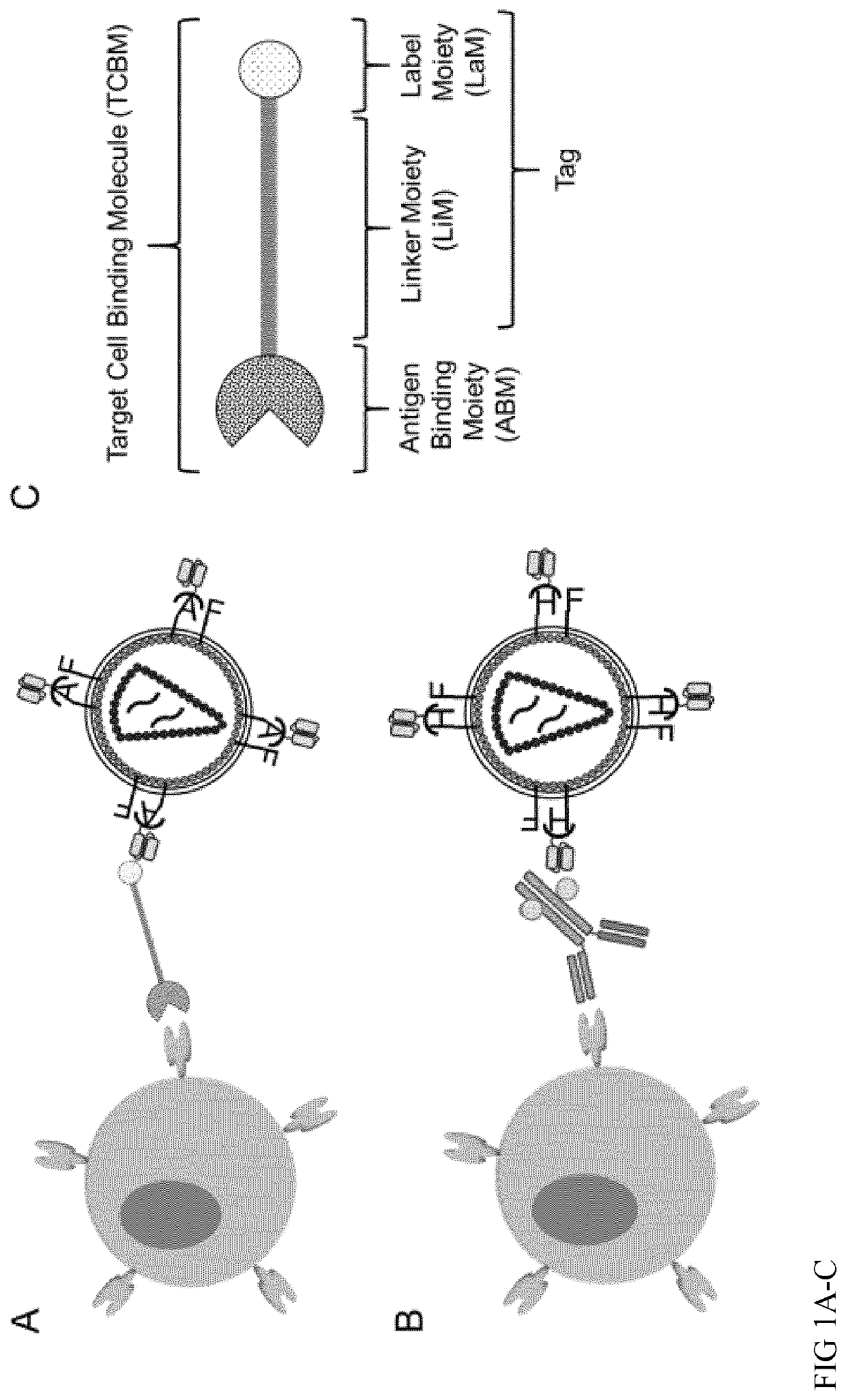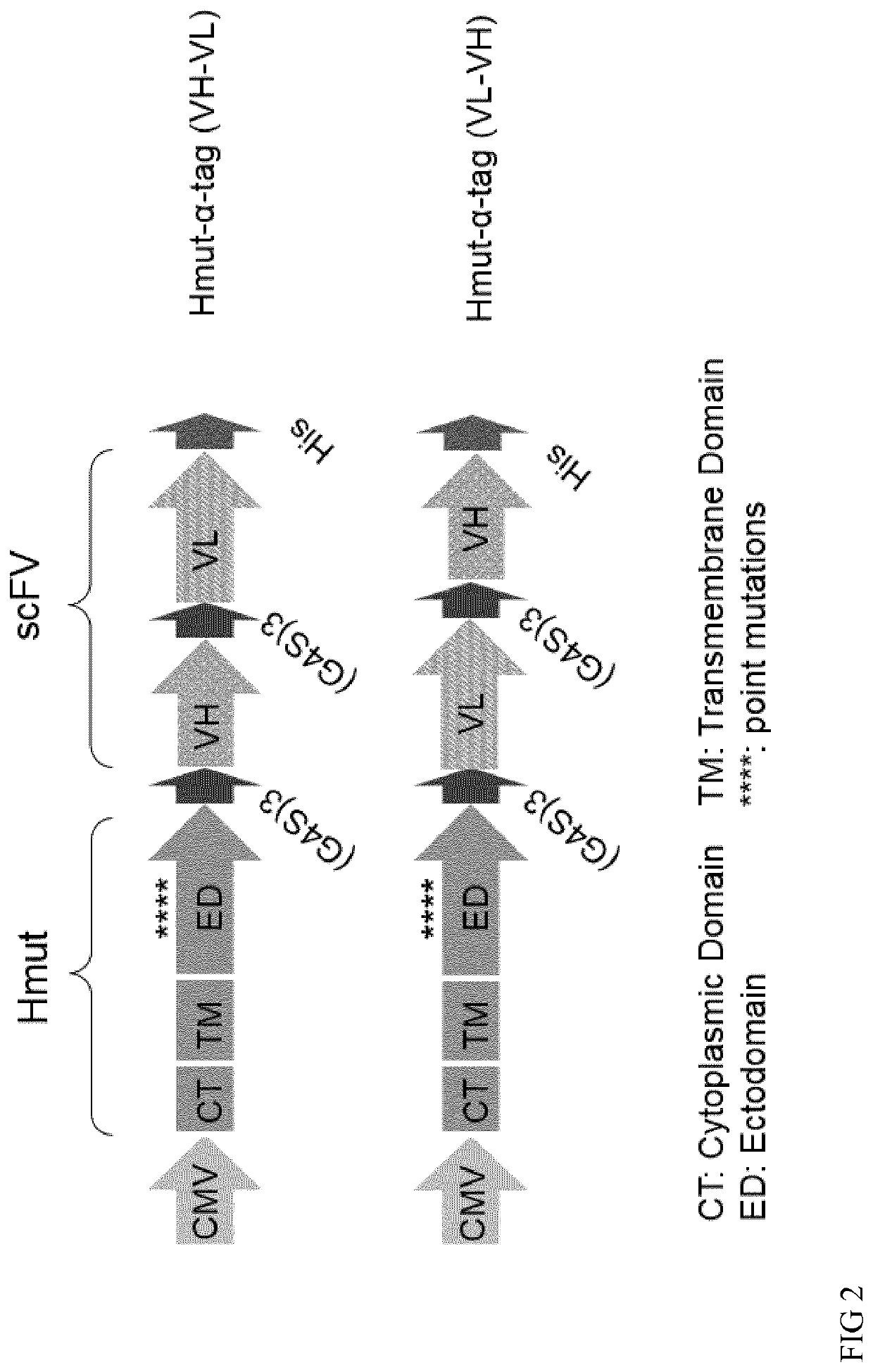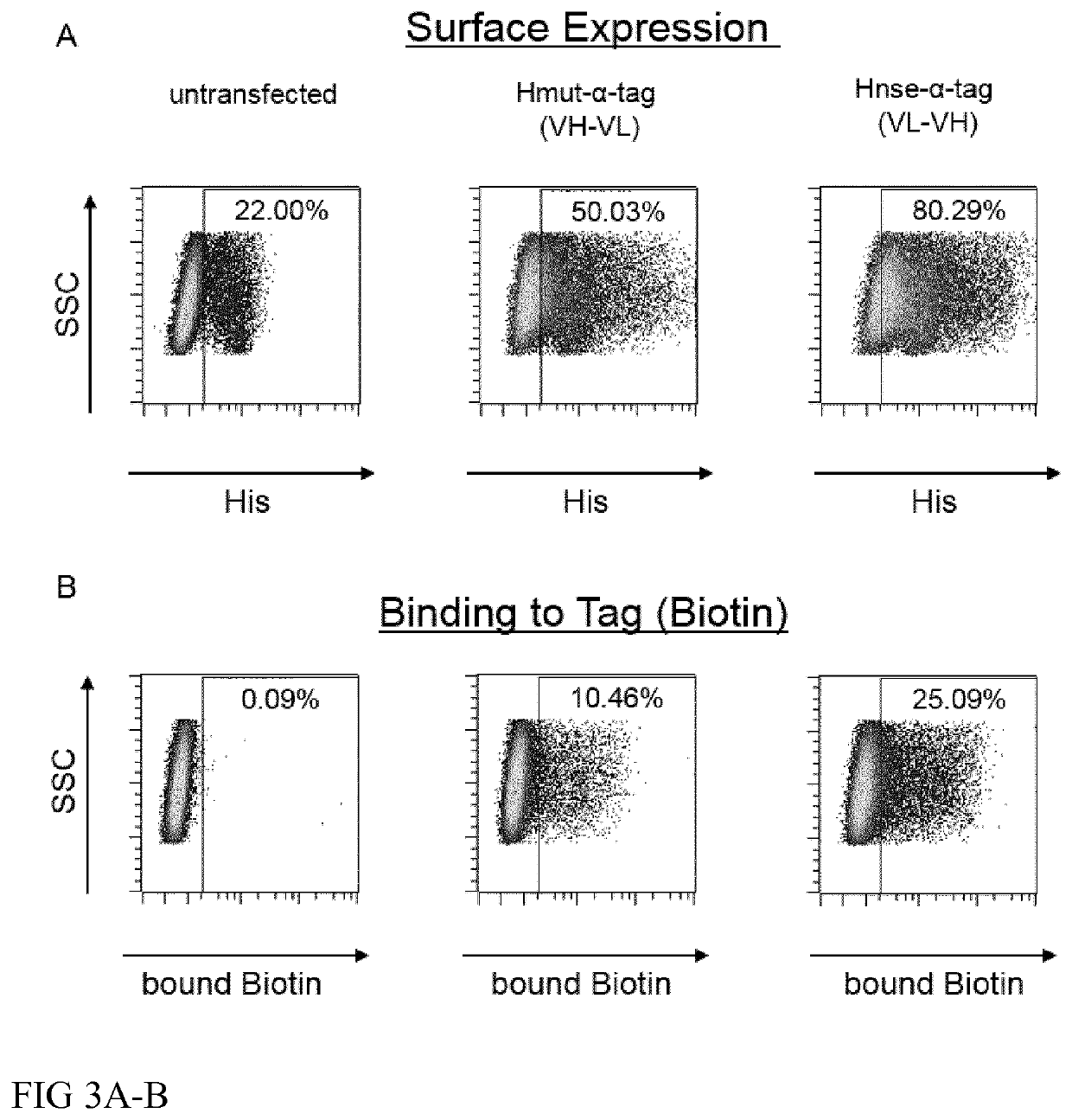Adapter-based retroviral vector system for the selective transduction of target cells
a target cell and adapter technology, applied in the field of pseudotyped retroviral vector particles or vectorlike particles, can solve the problems of hammering the safety profile and applicability of retroviral vectors in many therapeutic fields, system selection, productivity or applicability limitations, etc., and achieve high target cell selectivity
- Summary
- Abstract
- Description
- Claims
- Application Information
AI Technical Summary
Benefits of technology
Problems solved by technology
Method used
Image
Examples
embodiments
[0151]In addition to above described applications of the adaptable retroviral vector particle system as disclosed herein or the virus-like particle system as disclosed herein, further embodiments of the invention are described in the following without intention to be limited to these embodiments.
[0152]In a preferred embodiment of the adaptable retroviral vector system target cells present in a mixed cell population with non-target cells are selectively transduced or VLP uptake is selectively induced.
[0153]In another embodiment of the adaptable retroviral vector system the specificity of the tagged polypeptide is adjusted according to the expression level of an antigen on the target cells.
[0154]For example, cells or cell types that do not express sufficient levels of VSV-G receptors and therefore are resistant to VSV-G pseudotyped retroviral vector transduction may be more efficiently transduced using the adaptable retroviral vector system and tagged polypeptides specific for antigen...
example 1
of the Adaptable Retroviral Vector System
[0245]Envelope proteins with antigen binding activity with reduced or ablated interaction with their native receptors were equipped with scFvs specific for biotin (SEQ ID NO: 1 and 2), clone Bio3-18E) and dextran (SEQ ID NO: 13 and 14), respectively. For the biotin specific scFv, the LLE principle (FIG. 1C) as disclosed herein may be applied, i.e. the antigen binding domain of the scFV Bio3-18E binds with higher preference to biotin (LaM) that is coupled to the 6-(6-aminohexanamido) hexanoyl moiety or a 6-aminohexanoyl moiety (LiM) than to free biotin or biotin coupled with other linkers. LiM connects biotin and the antigen binding moiety (ABM) of the target binding molecule (TCBM).
[0246]Two chains of the scFVs are linked via a 3(G4S) linker (SEQ ID NO: 11) and may be present in either orientations (VH-VL or VL-VH). The orientation can influence expression levels, stability, affinity to the tag of the tagged polypeptide ant the titer of the p...
example 2
n of a Tag Specific, Pseudotyped Retroviral Vector
[0248]Pseudotyped retrovrial vector particles specific for a tag of tagged polypeptide were generated by transient transfection of HEK-293T cells. HEK-293T cells that were seeded in T175 flasks in DMEM / 10% FCS (Biowest, Cat. No. 12362; Biochrom, Cat. No. SO415) the day before were transfected with a plasmid encoding for the H protein, a plasmid encoding for the F protein, a packaging plasmid encoding gag / pol / rev and a psi-positive transfer vector plasmid encoding GFP. The pseudotyped retroviral vector particles were harvested 48 h post transfection. To remove cellular debris, the supernatant was collected, centrifuged for 10 min at 1000 rpm, followed by filtration through a 0.45 μm filter. To concentrate, the filtered supernatant was centrifuged through a 20% sucrose (Sigma Aldrich, Cat. No. 84097-250 g, 20% w / v in PBS) cushion for 24 h at 4° C. with 5350×g. The pelleted retroviral vectors were resuspended in 250 μl precooled PBS, al...
PUM
| Property | Measurement | Unit |
|---|---|---|
| diameter | aaaaa | aaaaa |
| temperature | aaaaa | aaaaa |
| concentration | aaaaa | aaaaa |
Abstract
Description
Claims
Application Information
 Login to view more
Login to view more - R&D Engineer
- R&D Manager
- IP Professional
- Industry Leading Data Capabilities
- Powerful AI technology
- Patent DNA Extraction
Browse by: Latest US Patents, China's latest patents, Technical Efficacy Thesaurus, Application Domain, Technology Topic.
© 2024 PatSnap. All rights reserved.Legal|Privacy policy|Modern Slavery Act Transparency Statement|Sitemap



